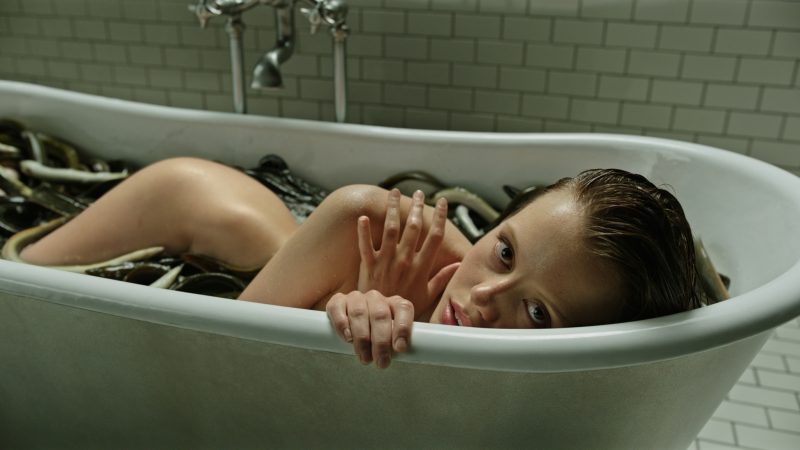Since its trailer dropped, A Cure for Wellness, interestingly, has been received well and loved as an aesthetic psychological thriller in the United States. The film, adapted from Justin Hayte’s story, is directed by the ever-versatile director of “Pirates of the Caribbean,” Gore Verbinski, known for his excellent works like “Rango” and “The Ring.” In 2013, his directorial attempt, “The Lone Ranger,” was a box office disaster. Returning to the big screen three years later, the director is likely to face another setback. The reason: the aesthetic visuals promised in the trailer do not seem to be effectively fused with a coherent storyline.
Let’s briefly delve into the plot… Lockhart is a successful businessman who has brought significant profits to his company. However, the board discovers that he has been involved in money laundering and reports him to the police. Lockhart strikes a deal with the board and is assigned the task of locating the former CEO, who has gone into seclusion in Switzerland. Thus, they plan to shift the blame onto the former CEO, exonerating young Lockhart. On a long journey, Lockhart reaches a secluded health center named Senatorium on top of the mountains in Switzerland, a place people don’t want to leave once they arrive. The fact that people don’t want to leave is strange enough, but even more bizarre events unfold after Lockhart’s arrival.

In fact, one needs to split the film into two parts. Early in the film, a man dies of a heart attack. It’s a small investment for a dialogue later in the film: “We live such futile lives,” the film tells us. Senatorium is filled with wealthy elderly people who think they live futile lives. They have all come for treatment, and they all seem strangely satisfied with their treatments. Until the end of the film, Lockhart and the audience cannot comprehend why they are so content. In fact, even at the end, we don’t understand. Because the film is riddled with confusion and logical errors.
Senatorium, led by a chief doctor who considers ambition, arrogance, ego, and more as illnesses, aims to free people from these afflictions. They pacify people, turning them into seemingly healthy, permanently happy, and satisfied individuals, almost like they are constantly drunk. They claim to achieve this through the use of a water source that has been available in the area for years and is believed to be healthy. I use the word “claim” because Senatorium is one giant placebo effect. You can believe everything an alleged expert tells you. If they say you’re sick, you’ll believe you’re sick and need treatment, especially if you’ve gone to the expert yourself. Lockhart is arrogant but also somewhat humble. His arrogance prevents him from believing the doctors, but his humility helps him understand the people there.

The film sets up numerous mysterious questions early on, naturally prompting the audience to wonder what is happening at Senatorium. It has a profound effect on you, making you look for the diabolical reason behind the façade. However, in the second act, the film fails to provide satisfactory answers to the questions it raised initially and even introduces new unanswerable questions. The director and screenwriter present many scenes with no answers or potential answers. In the second act, the story becomes increasingly convoluted, completely undermining the mystery established in the first act. It transforms into a work that lacks clarity, coherence, and logic.
Unfortunately, only beautiful visuals remain, which is perhaps the only redeeming aspect of the film, and credit must be given to Gore Verbinski in that regard. However, when these beautiful visuals are not complemented by a compelling narrative, it takes a toll on the actors and their otherwise commendable performances. If you enjoy psychological thrillers or mysteries set in psychiatric hospitals, beauty centers, or hospitals, “A Cure for Wellness” is a film worth trying out at the cinema.

Cast & Crew
director: Gore Verbinski
writers: Gore Verbinski, Justin Haythe
starring: Dane DeHaan, Jason Isaacs, Mia Goth, Harry Groener, Celia Imrie
USA – GERMANY | 2016 | 146 MINUTES |
